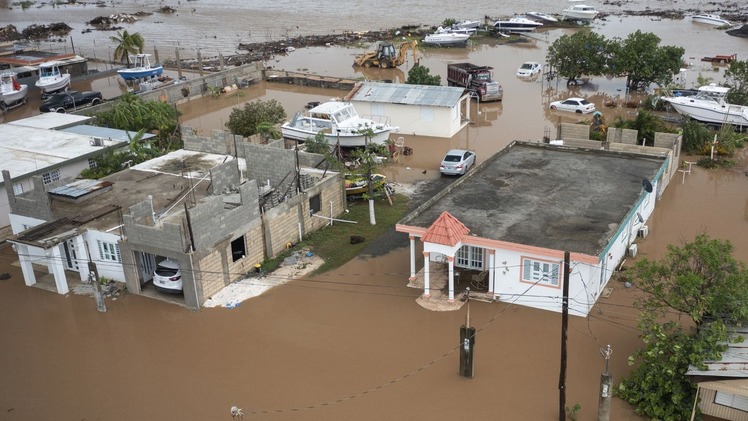On the morning of September 20, Hurricane Fiona, with maximum sustained winds of 115 mph (185 km/h), struck the Turks and Caicos Islands as a Category 3 storm, after causing severe devastation in Puerto Rico and the Dominican Republic.
According to the US National Hurricane Center, Fiona, which has become the first major hurricane of the 2022 season in the Atlantic, is likely to strengthen further into a Category 4 hurricane as it approaches Bermuda on Friday. It has been forecast that it will weaken before hitting eastern Canada over the weekend.
The hurricane, while it passed through the Caribbean Sea, left at least four people dead in Puerto Rico and one in the Dominican Republic in addition causing extensive infrastructural damage in both countries.
It hit the southeast coast of the Dominican Republic early on September 19 as a Category 1 hurricane, bringing strong winds and heavy rains. According to preliminary reports, around 12,400 people were displaced, at least fifty homes suffered partial or total damage, and over 11,000 households suffered power outages. It also left several highways blocked and cut off several villages.
A red alert was declared for 13 of the 32 provinces located in the north and east part of the country. Following the storm, Dominican President Luis Abinader declared the provinces of La Altagracia, La Romana, El Seibo, Samaná, Hato Mayor, María Trinidad Sánchez, Duarte and Monte Plata as “disaster zones” due to the damage caused. The nation remains on alert against floods and landslides.
In Puerto Rico, Fiona caused destruction at a far greater level. It made landfall on the southwest coast of the country on the afternoon of September 18 as a Category 1 hurricane, unleashing torrential rains and gusty winds in a large part of the island.
According to reports, it triggered a widespread blackout on the island, leaving over 1.3 million customers without electricity. Due to lack of power, water services remain cut for more than 830,000 customers, which represent two-thirds of the total on the island. The private Canadian-American electricity transmission and distribution company, LUMA Energy, against which Puerto Ricans have repeatedly mobilized in recent months, said that “the total restoration of the electrical service could take several days.”
Additionally, severe floods and landslides caused vast damage to public and private infrastructure as well as banana plantations and coffee trees. Several power lines and telecommunications lines were also knocked down. The collapse of at least one bridge was reported in the municipality of Utuado. Roads and highways across the island were blocked with trees down and a lot of flooding.
Puerto Rican Governor Pedro Pierluisi described the damage caused as “catastrophic.”
Hurricane Fiona exacerbated the situation in Puerto Rico, which is still recovering from the impacts of Hurricane Maria, which destroyed the power grid and killed more than 3,000 people in 2017.
Tropical Storm #Fiona Advisory 14A: Life-Threatening Flooding and Mudslides Possible Across Puerto Rico From Fiona During the Next Several Days. https://t.co/tW4KeGe9uJ
— National Hurricane Center (@NHC_Atlantic) September 17, 2022





